The long-awaited Bitcoin halving every four years has finally happened. Along with that, the Runes Protocol was launched, which is expected to replace Ordinals on the Bitcoin Blockchain in the future. So what is Runes Protocol? Let’s find out with Coincu through this article.
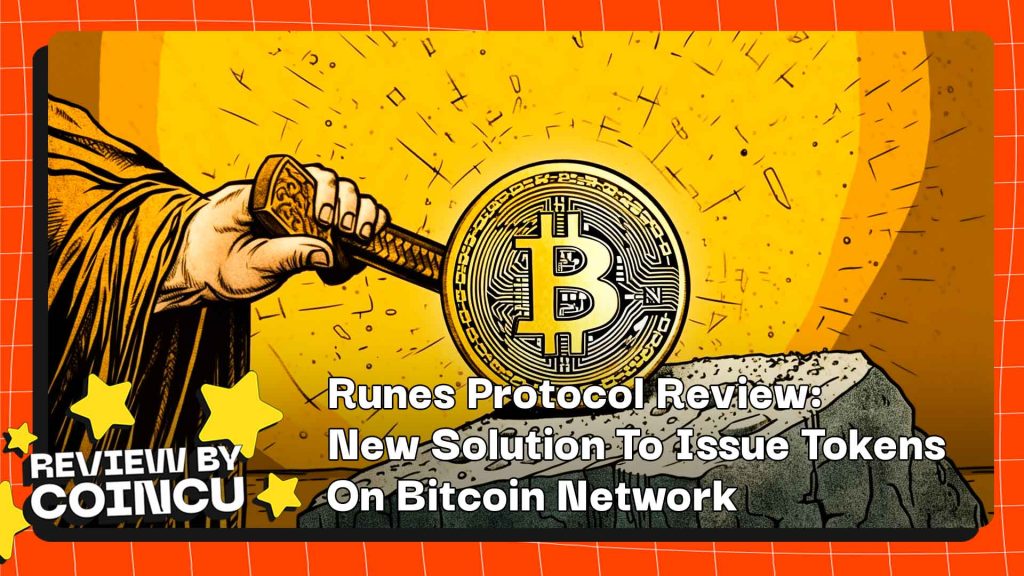
Runes Protocol Background
In 2023, the Bitcoin ecosystem experienced remarkable growth with significant developments such as the emergence of Bitcoin Ordinals and the subsequent proliferation of BRC-20 tokens.
Led by innovator Casey Rodarmor, the Ordinals Protocol has revolutionized the Bitcoin network, introducing groundbreaking features including Fully on-chain NFT, Inscription, and Layer 2. However, its most impactful contribution lies in enabling the creation of Fungible Token projects, marking an unprecedented advancement for Bitcoin.
Due to its simplistic programming language, Bitcoin has traditionally only supported its native token, BTC. However, the Ordinals shattered this limitation, paving the way for various token issuance protocols. Among the notable ones are BRC-20, ARC-20, ORC-20, ORC-CASH, and SRC-20, alongside older solutions like RGB, Counterparty, Omni Layer, and Taproot Assets.

While these innovations inject vitality into the Bitcoin ecosystem, diverging opinions exist regarding their impact. Some argue that the network faces spam and redundant content uploads daily, resulting in heightened hardware demands for miners and increased transaction costs for users.
Even the founder of the Ordinals protocol, in a candid blog post, concurred with the critique, highlighting that a majority of fungible tokens on Bitcoin are fraudulent or meme-based. Nevertheless, he acknowledges their persistence and the resultant strain on the network due to unnecessary Unspent Transaction Output (UTXO) fragmentation.
Casey Rodarmor acknowledges the clutter introduced by BRC-20 tokens, prompting him to develop the Runes Protocol. The new method aims to streamline token issuance on the Bitcoin network.
Read more: Top BRC-20 Tokens You Need To Watch
What is Runes Protocol?
Runes Protocol, a novel token issuance standard, is set to revolutionize the landscape of digital assets on the Bitcoin network. Unlike the prevalent BRC-20 standard, Runes Protocol operates on the UTXO (Unspent Transaction Output) model, offering a fresh approach to token issuance.
Proposed by Bitcoin Ordinals founder Casey Rodarmor in September 2023, Runes Protocol has sparked significant interest and debate within the Bitcoin community. Rodarmor positioned the protocol as a simpler and more efficient alternative to the existing BRC-20 standard.
At its core, Runes Protocol leverages the UTXO model, wherein transactions utilize previously unspent portions of Bitcoin to create new transactions. Rodarmor emphasized that Runes Protocol is specifically tailored for NFTs (Non-Fungible Tokens) and meme coins. The protocol’s mainnet launch coincided with the Bitcoin Halving event on April 19, 2024.
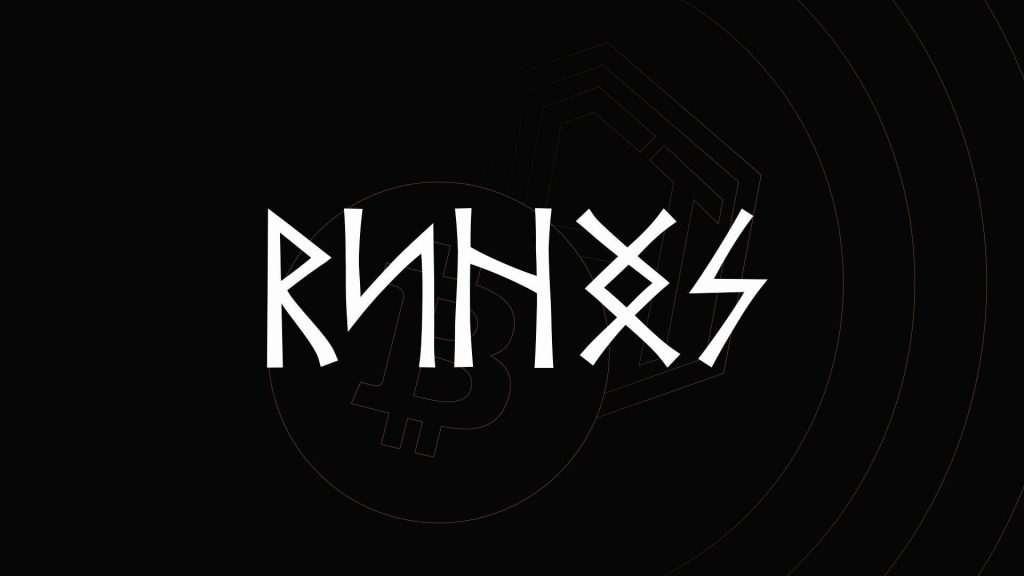
How Does Runes Protocol Work?
The Runes Protocol, akin to various token generation mechanisms on Bitcoin, operates through the utilization of OP_RETURN within transactions. These transactions serve to either create, mint or transfer Runes tokens.
OP_RETURN allows for the insertion of data into a Bitcoin transaction’s metadata without altering the UTXOs, thus ensuring minimal impact on the blockchain’s system.
Creating Runes Ticker (Etching)
This process involves establishing a new Runes ticker and determining parameters such as total supply and minting rules. Etchers undertake this task by defining key aspects of the token.
Minting Runes
Minting operations are straightforward, with the mint transaction specifying the creation of new Runes.
Sending Runes
Transferring Runes entails the use of “eddicts” within Bitcoin transactions, dictating the movement of tokens from input to output UTXOs. For instance, a portion of tokens can be sent to Alice while the remainder is returned to the sender.
Rune Destruction Mechanism (Cenotaph)
Runes Protocol features a mechanism known as Cenotaph, which is crucial for managing supply and preventing transaction spam. If errors occur, such as excessive minting or erroneous transfers, the affected tokens are destroyed, reducing the overall supply.
Read more: Can Ordinals Thrive With BRC-20, ORC-20, or SRC-20?
Highlights of Runes Protocol
- Efficient Use of UTXO
- Tokenization of Satoshi
- Robust Error Transaction Handling
- Integration with Lightning Network
Unlike traditional token standards like BRC-20, Runes Protocol leverages Bitcoin’s UTXO model more effectively. Instead of generating a new UTXO for each token transaction, Runes Protocol minimizes unnecessary UTXOs, reducing transaction complexities and costs.
Runes Protocol introduces a groundbreaking feature by allowing each satoshi (the smallest unit of Bitcoin) to represent a unit of a specific token. This innovation not only increases the versatility of tokens but also enhances liquidity within the system.
Runes Protocol implements a rigorous Cenotaph mechanism for error transaction handling, surpassing the capabilities of BRC-20. This ensures the integrity of the Rune supply and promotes transparency within the system.
Another notable feature of Runes Protocol is its compatibility with the Lightning Network, a Bitcoin sidechain. This integration enables faster and more cost-effective transactions, further enhancing the efficiency of the protocol.
Runes Protocol offers a comprehensive solution for token management and transaction processing, addressing key shortcomings of existing standards while introducing innovative features to improve the blockchain ecosystem.
Runes Protocol Ecosystem
The Runes Protocol ecosystem is experiencing rapid expansion, boasting various innovative projects spanning different sectors, including infrastructure and launchpads.
Pre-Runes
Prior to the official release of Runes, projects offering airdrops to Ordinal holders or enabling the minting of Runes post-Halving are categorized as Pre-Runes.
Runestones
Runestone, an Ordinal project and memecoin spearheaded by the enigmatic figure Leonidas on X, has emerged. It rewards wallet addresses with three or more inscriptions before January 20, 2024, with a Runestone airdrop. These Ordinals will be converted to Runes upon the occurrence of the Bitcoin Halving event.
Recently, the project unveiled plans for a memecoin airdrop for Runestone holders, with the first themed around dogs set for distribution by April’s end. Additional meme coins will follow later in the year and upon the project’s ascension within the ecosystem. Moreover, Runestone engages users with an augmented reality (AR) application, allowing them to visualize 3D Runestone images in real-life settings, fostering community engagement through social sharing.

The Rune Guardians
The Rune Guardians project introduces a collection of 10,000 Ordinals, with holders slated to receive a Mint Runes airdrop upon the official launch of the Runes Protocol. Currently, The Rune Guardians are tradable on Magic Eden.

RSIC
RSIC, a collection comprising 21,000 Ordinals, is on the brink of unveiling the RUNE token. Wallets possessing specific Ordinal Inscriptions, such as Ordinal Maxi Biz, have already received RSIC Ordinals through airdrops. RSIC is airdropped for free to users who own a certain number of Ordinals, mainly focusing on pioneers in the Ordinals community.
Runes DAO
Members of Runes DAO work together as a cooperative group to support one another in making informed decisions within the decentralized financial space. People actively exchange their research results, ideas, and tactical methods with one another within Runes DAO. Through pooling resources and knowledge, the community works to increase the likelihood that their investment will be successful.
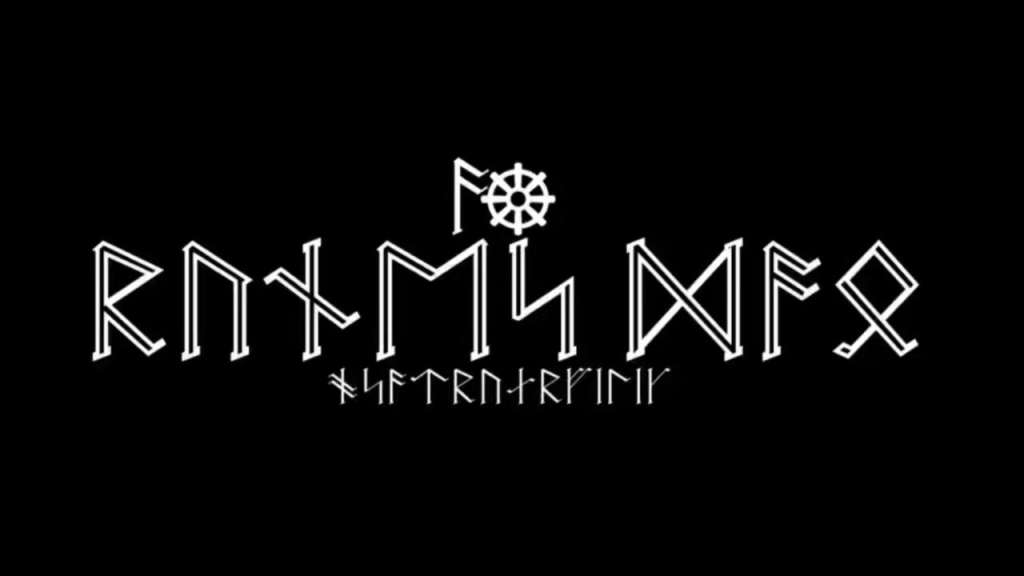
Marketplace
Numerous NFT Marketplaces facilitate the trading of Runes, including Magic Eden, OKX, and Ordinals Marketplace. Among these, Magic Eden stands out, particularly supporting the visual trading of Pre-Runes.
Projects within the Pre-Runes section of Magic Eden announce plans to airdrop or allow users to mint Runes upon the protocol’s official launch. To acquire Pre-Runes, users navigate to the Pre-Runes tab, following a familiar NFT purchase process.
Leading Pre-Runes collections, such as Runestone, Prometheans, Rune Pups, Bitcoin Puppets, and RSIC MetaProtocol, boast substantial market capitalization.
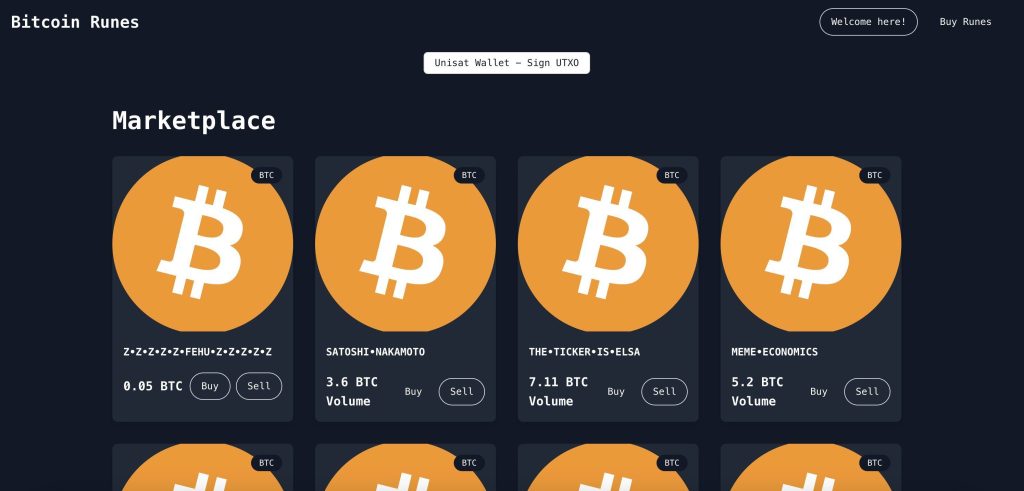
Launchpad
Launchpad initiatives within the Runes Protocol ecosystem enable users to mint Ordinals and receive airdrops based on their Ordinal holdings.
BitX Runes DEX
BitX pioneers as one of the earliest launchpad projects on the Bitcoin blockchain, facilitating BRC-20 token swaps and price tracking tools. Presently, BitX is in the developmental phase of its DEX on the Runes Protocol.
Airdrop campaigns target BitX Pre Runes PG Pass holders, who can mint BitX OG Pass on the BitX Launchpad using sats as payment.
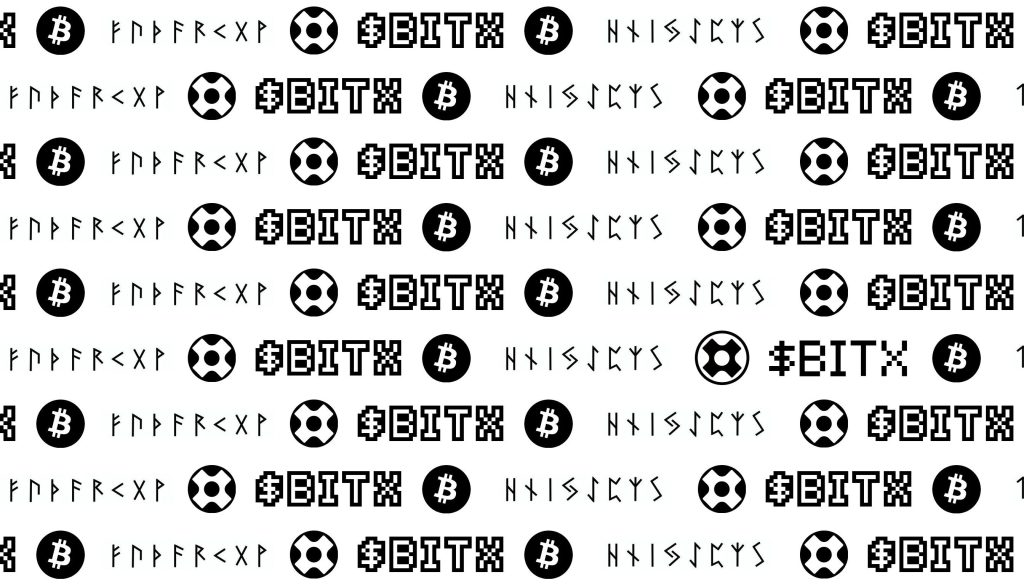
Other Launchpad Projects
Several other projects contribute to the Runes Protocol ecosystem through different launchpads:
- Runespad: Established in February 2023, offering transaction tracking, project development, and educational resources.
- Rune Bitcoin: Launched in November 2023, boasting functionalities akin to Runespad.
- Meta Runes: Commenced operations in August 2023, facilitating minting, presales, and Launchpad activities.
Data/Tooling/DeFi
Rune Alpha
Rune Alpha emerges as a comprehensive search engine facilitating the exploration of Bitcoin network transactions and active Runes. It offers vital information including supply, transaction volume, capitalization, holder count, total transactions, and creation dates. Users also enjoy functionalities like Rune transfers and organizing auctions.
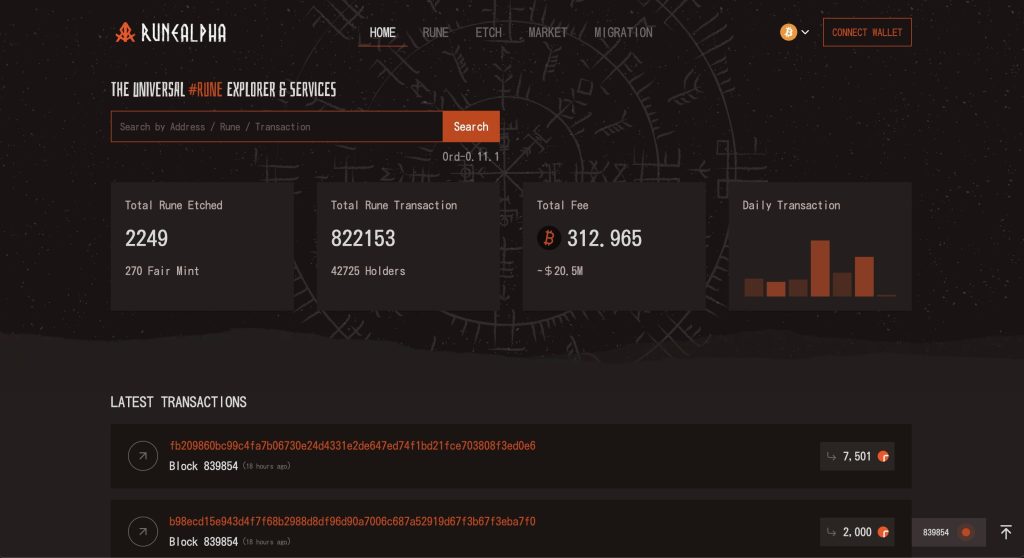
Liquidium
Liquidium empowers users to borrow against Ordinals, earning Bitcoin interest. Notable supported Ordinals include NodeMonkes, Runestone, and Bitcoin Pippets. Future plans include enabling mortgages using Runes and BRC-20 tokens.

Runessance
Runessance introduces borrowing and lending options within the Bitcoin ecosystem. Users can collateralize Bitcoin with UTXO tokens or lend Bitcoin to receive native yield. Currently, access is restricted to whitelisted participants in its testnet phase.
Wallets
UniSat
UniSat serves as an electronic wallet and exchange platform facilitating the trading of Ordinals and Atomicals, encompassing BRC-20 and ARC-20 tokens. Notably, UniSat features PUPS, one of the pioneering memecoins on the Bitcoin blockchain, enhancing holders’ chances of Rune Puppet airdrops.
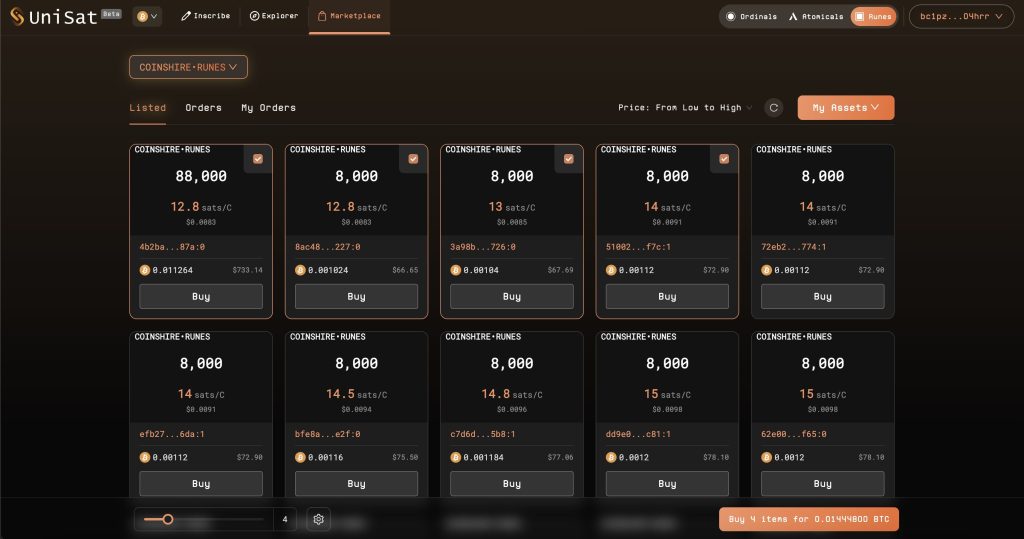
Xverse
Xverse emerges as an electronic wallet solution enabling users to mint Runes upon the protocol’s official launch. Additionally, Xverse supports trading and storage of various assets, including Ordinals, rare Sats, and STX-20 tokens. It also facilitates the minting of BRC-02 and STX-20 tokens.
Other noteworthy projects within the wallet segment of the Runes Protocol ecosystem include Ordinals Wallet and Leather Wallet, adding to the diversity of offerings and opportunities within the ecosystem.
PupsToken (PUPS)
PUPS is the first memecoin following the BRC-20 token standard on Rune Protocol and is fully released via airdrop. The PUPS token has grown over 100,000% since its launch and is currently trading with a market cap of around $300 million.
Other projects
Some other notable projects on the Runes Protocol ecosystem:
- The Rune Guardians: project to release 10,000 Ordinal collection, airdrop Runes to holders when Runes Protocol launches.
- Runes Terminal (RUNI): the first Runes Protocol Launchpad portal that facilitates the issuance of tokens for new projects.
- BTC Ordinal: MMORPG Ordinals game, ZBIT token (BRC-20) will be converted to Rune when launching the protocol.
- Node Apes: NFT project that combines Ordinal “Runic Miner” with profile photos (PFP) that were inspired by NodeMonkes.
- RuneX Tech: the first DEX to integrate “Pre-Runes” with SocialFi on Bitcoin.
Read more: What Is BRC-21, The New Token Standard Bases On BRC-20?
Runes vs. BRC-20
In recent times, the BRC-20 standard has garnered attention for its explosive growth, affecting major blockchains beyond just Bitcoin. However, dissatisfaction among Bitcoin developers has arisen due to BRC-20’s tendency to generate an excess of UTXOs on the Bitcoin network.
UTXOs represent the remaining Bitcoin balance after each transaction, essentially serving as the balance of Bitcoin in users’ wallet addresses. Notably, each transaction in the BRC-20 standard requires separate UTXO numbers for both input and output, contributing to the proliferation of UTXOs on the Bitcoin network.
In contrast, the Runes Protocol presents a solution to this issue by structuring token balances within UTXOs differently. Under this protocol, token balances are held within UTXOs, and each transaction output can contain any number of Runes tokens. This design aims to mitigate the widespread accumulation of UTXOs on the Bitcoin network.
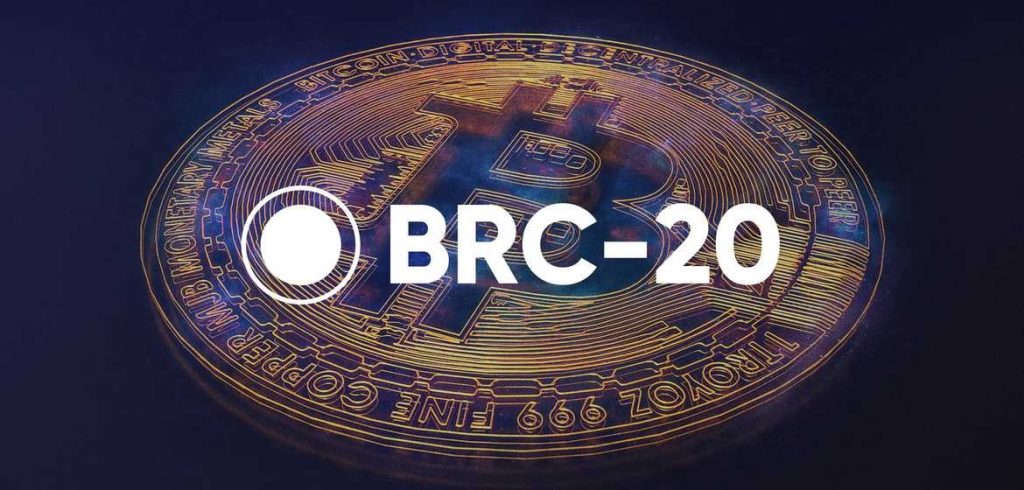
Runes also prioritizes user-friendliness by integrating seamlessly with established Bitcoin tools. Its straightforward system simplifies token creation and management. On the other hand, BRC-20 relies on Ordinals, a more complex technical framework that demands additional expertise and understanding from users.
Finally, Runes incorporates a robust mechanism to weed out poorly formed tokens, enhancing overall blockchain cleanliness and security. BRC-20’s issuance process may inadvertently introduce “junk data” onto the blockchain, potentially compromising its integrity and security.
Read more: Does The BRC-20 Tokens Have Application Value, Or Is It Just Hyperbole?
Will Runes Protocol Become a New Trend?
The Runes Protocol finds itself at a pivotal moment, presenting both a simpler, more efficient alternative to BRC-20 while grappling with challenges of community impulsivity.
Runes Protocol emerges as a new solution of promise amid the complexities of token creation on the Bitcoin network. Offering a streamlined approach, it tackles head-on the inefficiencies plaguing BRC-20 and other token issuance protocols like RGB and Taproot Asset.
The protocol’s straightforward design not only enhances token efficiency but also addresses the issue of blockchain spam. Runes Protocol anticipates revenue streams from transaction fees and developer engagement.
However, the protocol’s trajectory hinges significantly on community backing in the immediate future. While the allure of Runes Protocol’s simplicity and effectiveness is undeniable, concerns about community impulsivity loom large.
The team behind Runes Protocol
Casey Rodarmor is the creator of Runes Protocol. Born in California, USA, in 1983, the individual held positions at Google and Chaincode Labs after earning a Bachelor of Science in Computer Science from UC Berkeley.
His deep love for Bitcoin inspired him to develop the groundbreaking Ordinals system in 2023. Most recently, he developed the Runes Protocol, which offers a fresh standard for Bitcoin tokens.
Investors & Partners
Investors
Runes Protocol is supported by several well-known people and organizations in addition to Casey Rodarmor, co-founder of Ordinals protocol, including trevor.btc (who has 140,000 followers), Franklin Templeton,…
Partners
Currently, Runes Protocol has a number of noteworthy partners, including BitX Runes and NFT exchange Magic Eden. Moreover, a variety of initiatives, including BitX Launchpad, RunesPAD, Runessance, UniSat, and others, support the Runes Protocol token launch.
Conclusion
The recent successes of Ordinals and BRC-20 tokens have significantly boosted the market’s confidence in the Runes Protocol. With the halving event in the Bitcoin ecosystem, all eyes are on Runes Protocol, which is poised to emerge as the new token standard for the network.
While the potential advantages of Runes Protocol are promising, it’s crucial to acknowledge that every new initiative carries its own set of benefits and limitations. One of the key factors determining its success will be its adoption by the community. Time will tell how this new token standard shapes the future of decentralized finance on the Bitcoin network.
| DISCLAIMER: The information on this website is provided as general market commentary and does not constitute investment advice. We encourage you to do your own research before investing. |





















